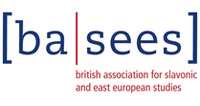

|
Sun7 Apr01:15pm(15 mins)
|
Where:
Teaching Room 5
Presenter:
|

After the October 1917 revolution, a wave of émigrés, commonly referred to as “Russia abroad” (Raeff), chose Europe as their new home. Among them was Alexei Mikhailovich Remizov (1877-1957), a Russian writer, graphic artist, and calligrapher, now recognized as one of the most important and original figures in 20th-century Russian culture. Before leaving the Soviet Union, Remizov was actively involved in the literary scene of St. Petersburg, alongside notable figures such as Ivanov, Gippius, Merezhkovsky, Blok, and Bely. Despite this, he did not receive proper critical attention until recently, remaining one of the least understood masters of modernist Russian prose.
The novelty and complexity of Remizov’s style account for both his role in Russia and, later, in emigration. In 1921, the writer emigrated to Berlin, and in 1923, he moved definitively to Paris, where he spent the rest of his life. In Europe, Remizov was soon welcomed by European intellectuals fascinated by his work. Thanks to the mediation of other Russian émigrés who deeply admired him, particularly the philosopher Lev Shestov (1866-1938) and the literary historian and critic Prince Svyatopolk-Mirsky (1890-1939), who had lived in England for 20 years, Remizov caught the attention of the British modernist elite temporarily residing in Paris and established direct contacts with them.
The paper aims to explore cross-cultural networks, intellectual contacts and interpersonal relations between Russian émigrés and British intellectuals in 1920s Paris, with a particular focus on the Bloomsbury group and its members. We will concentrate on the literary collaboration between Remizov, Mirsky, Shestov and the Cambridge scholar and Russophile Jane Ellen Harrison (1850-1928). Assisted by Remizov’s wife, Serafima Pavlovna Dovgello (1876-1943), a paleographer and professor, Harrison, along with her student and companion Hope Mirrlees (1887-1978) worked together with Mirsky and Remizov on the first English translation of the 17th-century masterpiece The Life of Archpriest Avvakum, by Himself, published in 1924 by the Hogarth Press, founded by Virginia and Leonard Woolf.
Additionally, despite the “untranslatability” of Remizov’s style, in 1926, Harrison and Mirrlees translated some of his tales into English, publishing them in The Book of the Bear. These translations, acting as a “bridge” between the Bloomsbury world and “Russian Paris”, bear witness to the growing interest and fascination of British modernist elites, particularly Harrison and Woolf, in Russia and Russian literature and language during the 1920s. Simultaneously, they show the active involvement of Russian émigrés in European cultural life and literary movements, as well as their personal and professional collaboration with European intellectuals. This theme, recently gaining considerable attention from critics, deserves more detailed research.